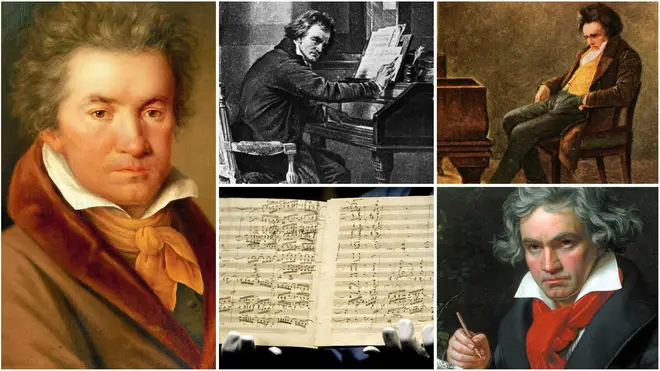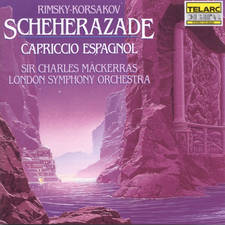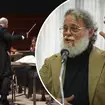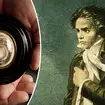Definitively the 20 greatest Beethoven works of all time
12 December 2023, 12:47

Beethoven is considered by many the greatest classical music mind of all time. From his symphonies to his sonatas, I’m going to count down this extraordinary composer’s most memorable pieces of music.
Ludwig van Beethoven was possibly the most influential composer in the history of classical music, making it very hard to choose just 20 of his greatest works (I’m putting in an honourable mention now for the lovely ‘Moonlight’ Sonata and Für Elise!).
But to mark the 250th anniversary of his birth – and to celebrate my new series, Beethoven 250 – let’s give it a go.
Read more: 10 works of Beethoven that actually changed the world
-
Archduke Trio
This was the last piece Beethoven performed in public, due to the worsening of his deafness. Dedicated to his greatest patron, the trio has a joyous first movement, but the slow movement is one of his loveliest. I can’t hear it without thinking of the pain he felt at knowing he would no longer perform in public.
Read more: If Beethoven was completely deaf, how did he compose music?

Beethoven - Piano Trio, Op. 97 (Archduke Trio)
-
Waldstein Piano Sonata
The Waldstein Piano Sonata was dedicated to Beethoven’s patron in Bonn, back in his teenage years. Once again there’s a joyous first movement, with rapidly repeated chords at the opening – a challenge for the pianist. It’s followed by a mysterious slow movement, before the final movement takes flight with a glorious soaring theme. An answer to those who say his music is always angry.

Lucas Jussen - Beethoven 'Waldstein' Sonata
-
Triple Concerto
This is my candidate for one of the two most unjustly neglected compositions by Beethoven. He wrote it for friends, so the piano part – to be played by Archduke Rudolf – is not complex. The cello has the most demanding part, because it was played by a professional. The slow movement has a deep beauty to it.

Anne-Sophie Mutter, Daniel Barenboim, Yo-Yo Ma – Beethoven: Triple Concerto in C Major, Op. 56 No. 2
-
Choral Fantasia
Like the Triple Concerto – unjustly neglected. It begins with solo piano, then orchestra comes in, then chorus and soloists. At the first performance, Beethoven was improvising, and the piece went off the rails. The main theme is a precursor for the theme of the final movement of the ‘Choral’ Symphony, and has suffered by comparison.

Martha Argerich-Beethoven,Choral Fantasy
-
Kreutzer Violin Sonata
An exposed opening for solo violin, double-stopping across all four strings. The longest, and most complex, of Beethoven’s 10 violin sonatas, regarded as the pinnacle of violin sonatas. At the first performance, with Beethoven on piano, the violinist George Bridgetower sight-read the score, because Beethoven only finished it the night before.

Yuja Wang & Joshua Bell : Beethoven - Violin Sonata No. 9 "Kreutzer" Opus 47
-
Violin Concerto
Beethoven only wrote one violin concerto. The opening — four soft beats on timpani — creates a new sound right at the start. The slow movement is one of the most beautiful in the repertoire. Brahms modelled his own violin concerto entirely on this.

BEETHOVEN Concerto for Violin and Orchestra - Hilary Hahn, violin; Leonard Slatkin, conductor
-
Grosse Fuge
The ‘Great Fugue’ – which was the original final movement of the String Quartet No. 13 – achieves a degree of intensity never before or since achieved by any other composer. One of the most complex pieces of writing in all classical music, and one that makes extraordinary demands on the players.

Beethoven Grosse Fugue Op.133
-
String Quartet No. 15, Op. 132
There are five movements to this quartet, the middle one being the Heiliger Dankgesang — the Holy Song of Thanks from a Convalescent to the Godhead. It represents some extraordinary writing, that Beethoven finished just after recovering from a serious illness that he thought would kill him.

Beethoven String Quartet Op. 132 in A Minor - Ariel Quartet (full)
-
String Quartet No. 13, Op. 130
The five Late Quartets are the single most intense body of writing Beethoven ever achieved. There are six movements in Op. 130. The ‘Cavatina’ is deeply emotional – the first violin ‘weeps’ – and a friend said its composition cost Beethoven real tears. The final movement, the ‘Grosse Fuge’, was considered too massive for what had gone before, and Beethoven replaced it and published it separately (see no. 14).

Beethoven String Quartet No. 13 in B-flat Major, Op. 130 (Grosse Fuge) - American String Quartet
-
Fidelio
Beethoven’s only opera... and it took him three versions (and four overtures) to get it right. Fidelio is at the same time a love story – a wife disguises herself as a boy to get a job at the jail where her husband Florestan is imprisoned, and engineers his release – and the story of freedom triumphing over oppression. Florestan’s aria at the opening of Act II sums up Beethoven’s political creed.

Jonas Kaufmann - Beethoven - Fidelio - 'Gott! welch Dunkel hier!'
-
Missa Solemnis
Missa Solemnis was Beethoven’s only serious attempt at a religious work, yet it is more of a concert piece than a mass. The violin soaring above the orchestra in the ‘Benedictus’ was seen as an attempt to portray the Holy Spirit in music, and the censor banned it! On the manuscript Beethoven wrote ‘Von Herzen – Möge es wieder – Zu Herzen gehn!’ (‘From the heart – may it return to the heart!).

Leonard Bernstein & Concertgebouworkest Amsterdam - Beethoven: Missa solemnis
-
Hammerklavier Piano Sonata
The greatest of his 35 piano sonatas, written at the height of the draining court case he waged against his sister-in-law, and inspired by the arrival of a Broadwood piano as a gift from London. The leap in the left hand at the opening is almost humanly impossible to play at the speed he set!
Read more: Beethoven’s epic ‘Hammerklavier’ played on his own piano

Beethoven Sonata #29 Op. 106 "Hammerklavier" Valentina Lisitsa
-
Piano Concerto No. 4
This is Beethoven breaking new ground yet again. For the first time, solo piano opens the concerto, with a simple turning phrase, which goes on to dominate the first movement. In the second movement the piano and orchestra are like two separate voices engaged in argument. Only in the final movement are they reconciled.

Hélène Grimaud: Beethoven - Piano Concerto No. 4, Op. 58 (Orchestre de Paris, Christoph Eschenbach)
-
‘Pathétique’ Piano Sonata
An early piano sonata, but it broke new ground. Nobody had ever begun a piano sonata with a single fortissimo chord. The lyrical second movement is famously used by Billy Joel in ‘This Night’ on his album Innocent Man.

Daniel Barenboim plays Beethoven Sonata No. 8 Op. 13 (Pathetique)
-
‘Emperor’ Piano Concerto
The highest placed piece by Beethoven in the Classic FM Hall of Fame. The huge opening runs on piano – signalling something extraordinary to come – a slow movement breathtaking in its beauty, leading straight into a syncopated finale. The name was given to it by Beethoven’s English publisher. Beethoven disapproved.

Lang Lang —— BEETHOVEN: Piano Concerto No. 5
-
Symphony No. 9 (‘Choral’)
The Ninth is the culmination of Beethoven’s genius. He uses solo voices in a symphony for the first time, setting the words of Schiller’s poem An die Freude. It is the longest and most complex of all his symphonies, which we may regard it as the pinnacle of his achievement, because it is his last symphony – but he was working on his Tenth when he died.
Read more: What are the lyrics to ‘Ode to Joy’, Beethoven’s triumphant choral anthem?

Beethoven 9th Symphony - Movement IV - "Ode to Joy"
-
Symphony No. 5
The most famous bars in all classical music open this symphony. Yet it is not a tune, a melody. It is a motif. For the first time in any symphony by any composer, Beethoven carries the motif right through the symphony. Again, for the first time, he uses trombones, piccolo, and contra-bassoon in a symphony. We have a new sound.

Beethoven's 5th, conducted by a 3-year-old boy
-
Piano Concerto No. 3
Beethoven has finally shaken off the influence of Mozart. The first movement has a richness and complexity beyond the earlier two. The slow movement is almost hymn-like, with a scale towards the end in which the 7th note is flattened. Just in case you think it is a mistake, he repeats it in the next bar. Beethoven the master has emerged.

Beethoven - Piano Concerto No. 3 in C Minor Op. 37 (Daniel Barenboim & West-Eastern Divan Orchestra)
-
Piano Sonata No. 31, Op. 110
This is the middle of the final set of three piano sonatas Beethoven composed. In it he tells us of his deafness, the pain it has caused him, and how he overcame it. I see his 35 piano sonatas as his ‘autobiography’.

Ashkenazy: Beethoven - Sonata 31 Opus 110
-
Symphony No. 3 ‘Eroica’
Quite simply the most important symphony ever written by any composer in the history of the world. Ever. Beethoven, at the age of 32, had finally confronted his deafness, and determined to overcome it. This is the beginning of his ‘Heroic’ phase.
It was originally dedicated to Napoleon, but Beethoven scratched his name off the title page when he learned he had declared himself ‘Emperor’. Those two opening chords signalled a new era in music.

Beethoven: Symphony No. 3 Eroica | Michael Boder & ORF Vienna Radio Symphony Orchestra


























